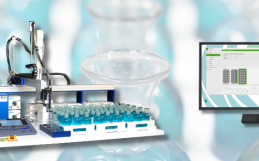Dalhousie’s Centre for Water Resources Studies (CWRS) is home to an exceptional team of students, researchers, and professors constantly pushing the barriers of knowledge in fields related to water, our environment, and how humans factor into the equation. As part of their research, they also investigate new methods and instruments for monitoring water quality, and through this investigation were turned on to the potential for PeCOD to be a valuable tool and asset for quantification of natural organic matter.
You can download the pdf version of this application brief by the CWRS team using this link.
Using PeCOD to Quantify Treatability of Natural Organic Matter
Prepared by Amina Stoddart and Lindsay Anderson
Background
Natural organic matter (NOM) present in surface drinking water sources has an impact on water treatment and can lead to health effects if not removed sufficiently. NOM can be monitored using a few different tools, however, new methods to understand and manage NOM in drinking water systems are constantly needed.
NOM is typically quantified by measuring the concentration of TOC, DOC, color and UV254 of the raw water. However, these conventional NOM metrics do not give much specific information on the nature of NOM, its treatability, or its reactivity. Chemical oxygen demand (COD) is the amount of oxygen required to fully oxidize NOM and is typically measured using a standard method requiring hazardous chemicals. The current method works for COD concentrations > 50 mg/L and becomes less accurate when adjusted for concentrations between 5 and 50 mg/L. Alternatively, the PeCOD (photoelectrochemical chemical oxygen demand) analyzer is an instrument that measures chemical oxygen demand COD using a photoelectrochemical method. In contrast to standard COD methods, the PeCOD analyzer has a detection limit of 0.5 mg/L.
Results
PeCOD was measured on water samples collected from various steps throughout the treatment process at four different surface treatment facilities and compared to traditional NOM detection techniques. These techniques included total organic carbon (TOC), dissolved organic carbon (DOC), and UV absorption at a wavelength of 254 nm (UV254).
The raw water from each location had PeCOD concentrations < 50 mg/L, which would be less accurately quantified when measured with standard COD methods. The treated water at each facility had much lower PeCOD concentrations, where three of which had concentrations < 5 mg/L. Throughout the treatment train of each facility, the decrease in PeCOD mirrored the decrease of TOC, proving that the PeCOD analyzer was a viable tool for measuring NOM removal.
The TOC in facility 4 decreased by a total of 1 mg/L from raw water to finished water, and PeCOD was reduced by 3.6 mg/L. This shows that easier detection of subtle changes in treatment efficacy can be achieved by the PeCOD analyzer due to its larger scale of resolution.
(Adapted from Stoddart & Gagnon, 2014)
(Adapted from Stoddart & Gagnon, 2014)
Conclusions
The PeCOD analyzer followed a similar trend as traditional NOM removal tools, such as TOC. Its expanded scale of resolution allows it to provide information on water treatment performance even when NOM removal is small. This tool can provide more understanding of NOM removal in processes such as advanced oxidation and biofiltration. . The simplicity of the PeCOD allows it to be used by both laboratory technicians and operators, in both laboratory and plant environments for 24/7 testing. The COD results are generated in 3-7 minutes. The PeCOD investment price is significantly lower than TOC, providing further justification for water treatment plants and supporting laboratories.
References
Stoddart, A. K. & Gagnon, G. A. (2014) Application of photoelectrochemical chemical oxygen demand to drinking water. Journal – American Water Works Association, 106(9), E383-390.








